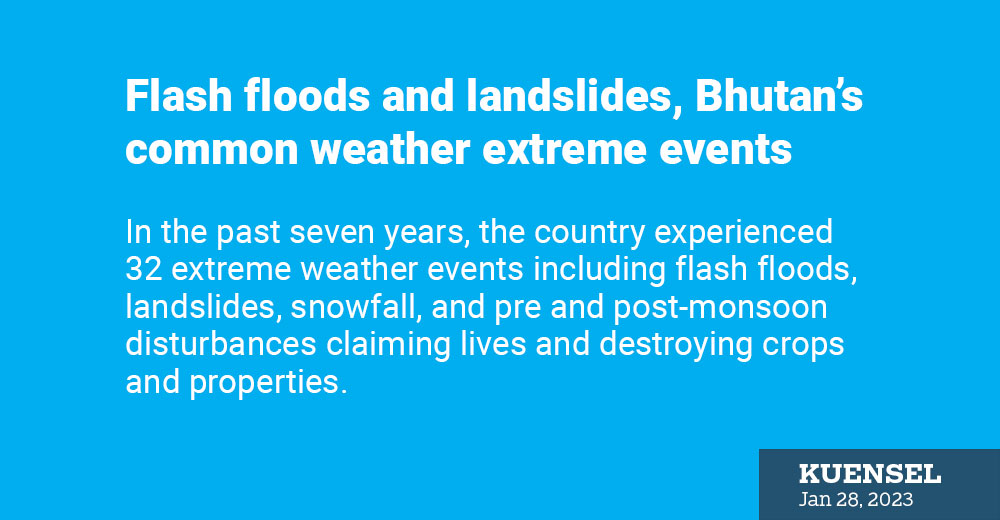Chhimi Dema
In the past seven years, the country experienced 32 extreme weather events including flash floods, landslides, snowfall, and pre and post-monsoon disturbances claiming lives and destroying crops and properties.
Three individuals were killed in Pemagatshel during a landslide in 2021. The swollen Amochhu washed away 26 cattle in Samtse in the same year.
Extreme events are occurrences of unusually severe weather or climate conditions that can cause devastating impacts on communities and agricultural and natural ecosystems.
Weather-related extreme events are often short-lived and include heat waves, freezes, heavy downpours, and floods.
The National Hydrology and Metrology Centre (NCHM)’s report on extreme meteorological events include events from 2016 to July 2022.
The extreme weather events were retrieved from mainstream media supported with data collected from their weather stations.
From 2016 to July 2022, the highest number of extreme weather events were flash floods and landslides caused by incessant rainfall.
Pre and post-monsoon events were recorded seven times last year making it the highest extreme weather experienced.
Various international reports mention that “climate change has exacerbated the intensity of extreme weather events, as global warming increases the evaporation of surface waters into the atmosphere, drying areas with little rain and increasing rainfall in others.”
According to the World Meteorological Organisation (WMO), a disaster related to a weather, climate or water hazard occurred every day on average over the past 50 years killing 115 people and causing USD 202 million in losses daily.
Asian Development Bank’s report published in 2014 stated that Bhutan could lose over six percent of its Gross Domestic Product annually by the year 2100 due to melting glaciers and climate change-induced extremes.
No recent data on the economic loss caused by climate change are available.
WMO recommends countries review hazard exposure and vulnerability considering a changing climate; strengthen disaster risk financing mechanisms at national and international levels, especially for least-developed countries and small island developing states and territories.


